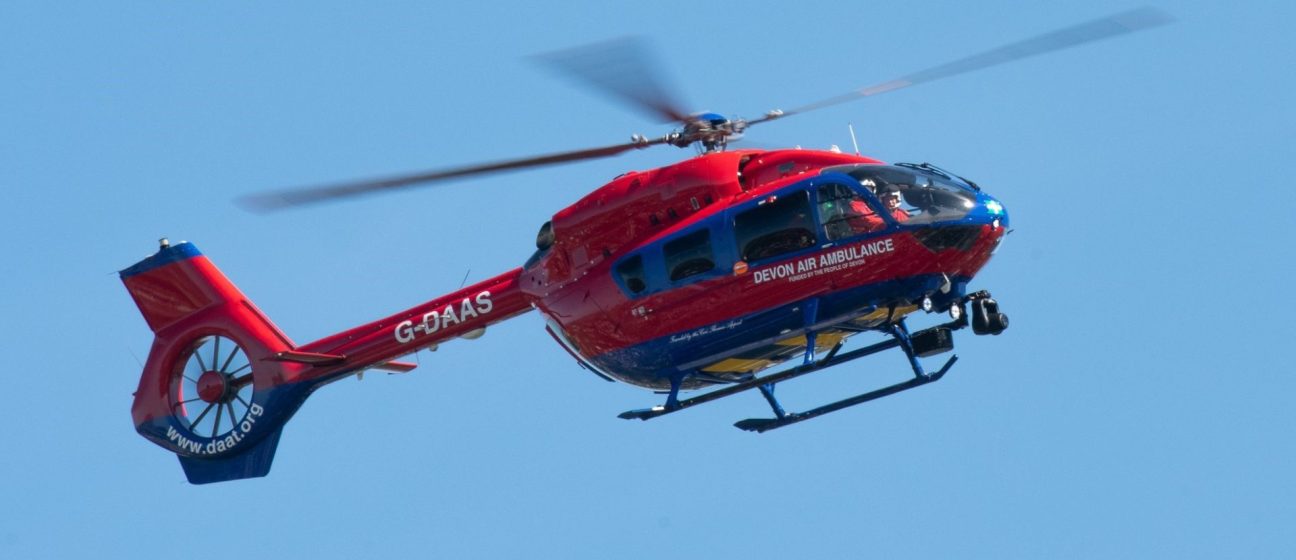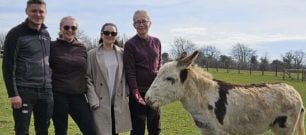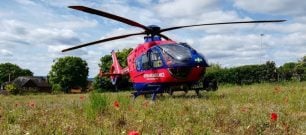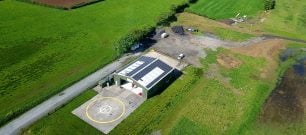
Friday 23rd March is World Meteorological Day and this year (2018) the focus is on being weather-ready and climate-smart. A former pilot talks us through some of how our teams respond to the changing weather.
The weather plays a significant role in many of our lives, but whereas all most of us need to do is decide whether to pack an umbrella when heading offf for the day, for those working in the world of aviation – in particular where lives are at stake – the weather plays a far more crucial role.
We spoke to Rob Mackie, former Senior Devon Air Ambulance Pilot and current Safety Manager, about what the weather means day to day for our pilots and crew.
How does the team get its weather reports?
We get our data from a variety of sources. Many pilots will take a look at the forecast on the TV the evening before a shift, but at the start of the shift they will check the aviation-specific reports, namely a METAR (METeorological Actual Report), which is what you can see out of the window at the airport.
These are updated every half an hour throughout the day. There will also be a TAF (Terminal Area Forecast), which gives a prediction of what the weather will be like in the vicinity of the airport issuing the reports. These TAF’s are generally valid for 9 hours and are updated every three.
There are also many online and APP-based services that give aviation-related information including rainfall charts, low-level winds, upper-level winds and temperatures and so on. The Met Office also recently launched a low-level weather service aimed at our sort of operation as, again generally, aviation reports and forecasts tend to concentrate on the ‘upper airspace’ for the airlines.
We also have the ability, through APP-based technology, to get actual weather information from remote, autonomous weather stations. We funded the installation of one on the roof of Derriford Hospital in Plymouth because once the airport closed, there was no way of getting any accurate weather information from that area and as it is our major Hospital, we needed to know that we could operate to it.
What are the most challenging conditions to operate in?
This is fairly subjective as it depends on the pilot. Some pilots don’t like flying in cloud whilst others don’t like falling snow. Low cloud and mist is tricky for others and quite a few don’t like strong gusty winds.
As a general rule though, the worst conditions for flying are Fog and icing conditions (icing conditions – not icy: in aviation, icing conditions are those atmospheric conditions that can lead to the formation of water ice on the surfaces of an aircraft, or within the engine as carburetor icing).
With fog the visibility goes right down, sometimes below limits – and if we are flying we will need to land at some stage and it can be very difficult if you can’t see the ground. Icing conditions are challenging because our aircraft do not have icing clearance. Ice is a major problem as it can form very quickly on an aircraft and can, in extremis, make the aircraft too heavy, so it falls out of the sky, freeze or restrict the controls with all the implications that can have, and it can even freeze the fuel. Icing, as far as aviation is concerned, can occur when the air temperature is at 4oc or lower and there is visible moisture (cloud, rain, drizzle etc.) this is really nasty and dangerous, so we avoid these conditions whenever possible.
On the other hand, the worst conditions for a patient can depend on their injuries. Strong, gusty winds with lots of turbulence is generally the worst as this often leads to airsickness (vomit is not good in a confined space!) or, if for example the patient has a spinal injury. So the wind is another factor that we have to take into consideration.
Is there a preferred time of year for missions?
From a crew perspective, blue skies, warmth, but not too hot, and sunny is ideal – and there is more likely to be such weather as this in the summer, of course. However, HEMS (Helicopter Emergency Medical Service) flying is a reactive resource. We can only respond after something has happened, which we have no control over, so we have to respond to that.
Do you have any weather-related anecdotes you can share with
Any pilot you speak to will have countless stories! For instance, 70mph fog, the snow shower that turned into a blizzard within seconds and we had to land (quickly) in a field for 20 minutes until it passed; the unseen, vicious turbulence around a mountain that inverted my helicopter; un-forecast, rapid deterioration in the weather that turned to fog, which called for a diversion to Plymouth airport and an instrument approach which only just got us in; and a tropical rainstorm with rain so heavy it reduced the visibility to zero and very nearly put the fire out in the engine!
Certainly our incredible crew has a great deal of adversity from the elements to deal with, all the while responding to ever-developing emergency situations and keeping patient care at the core.



